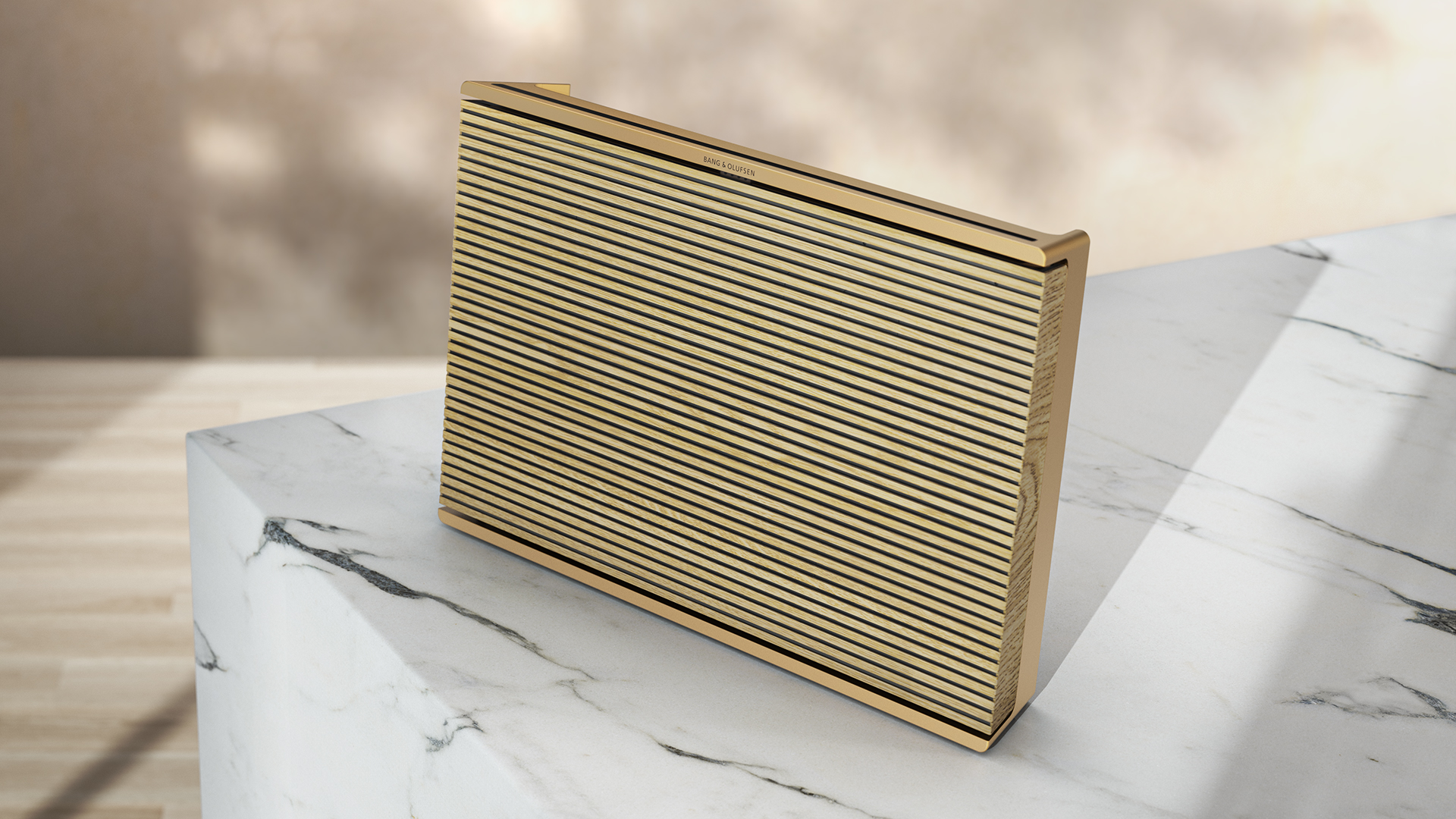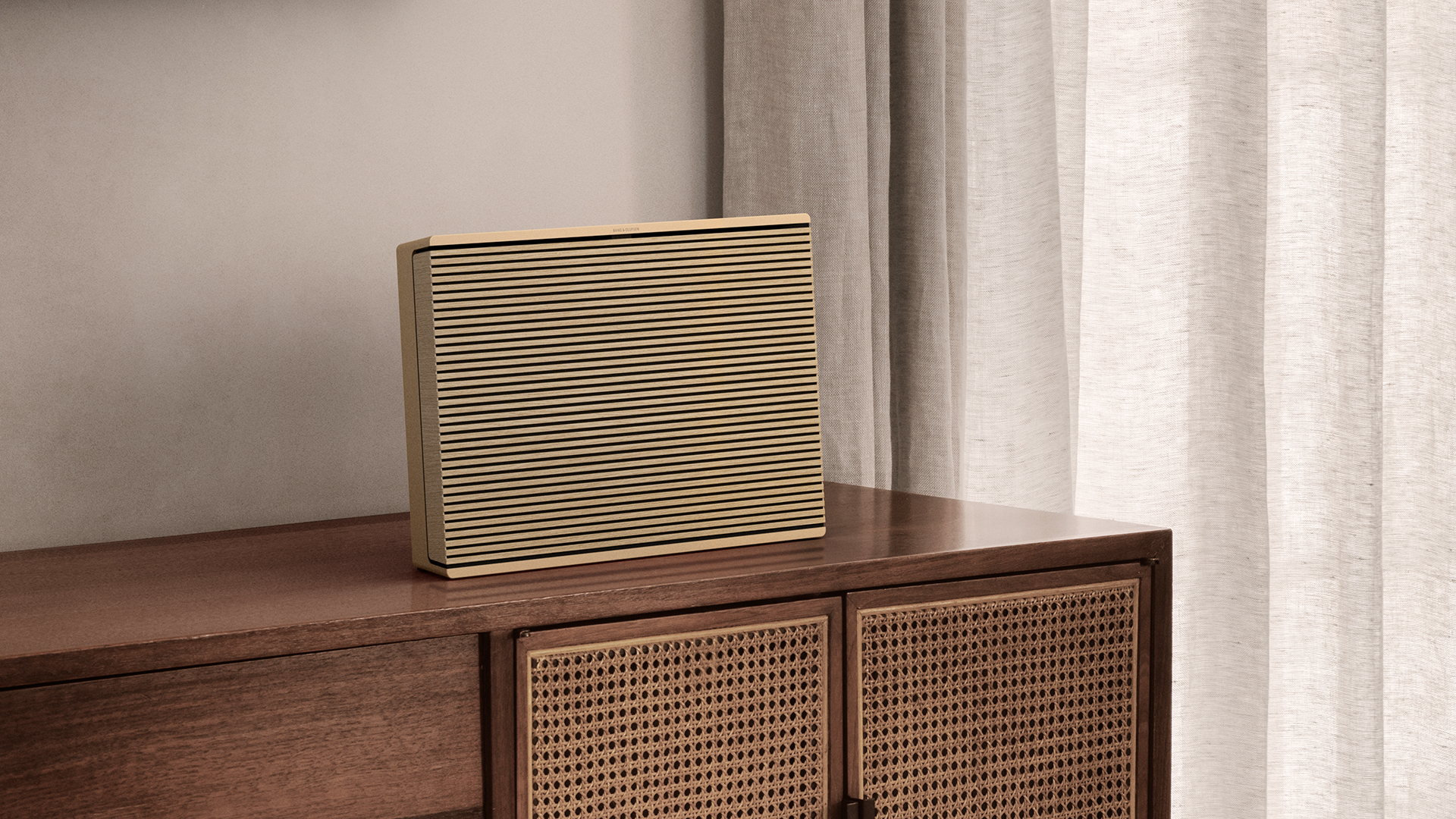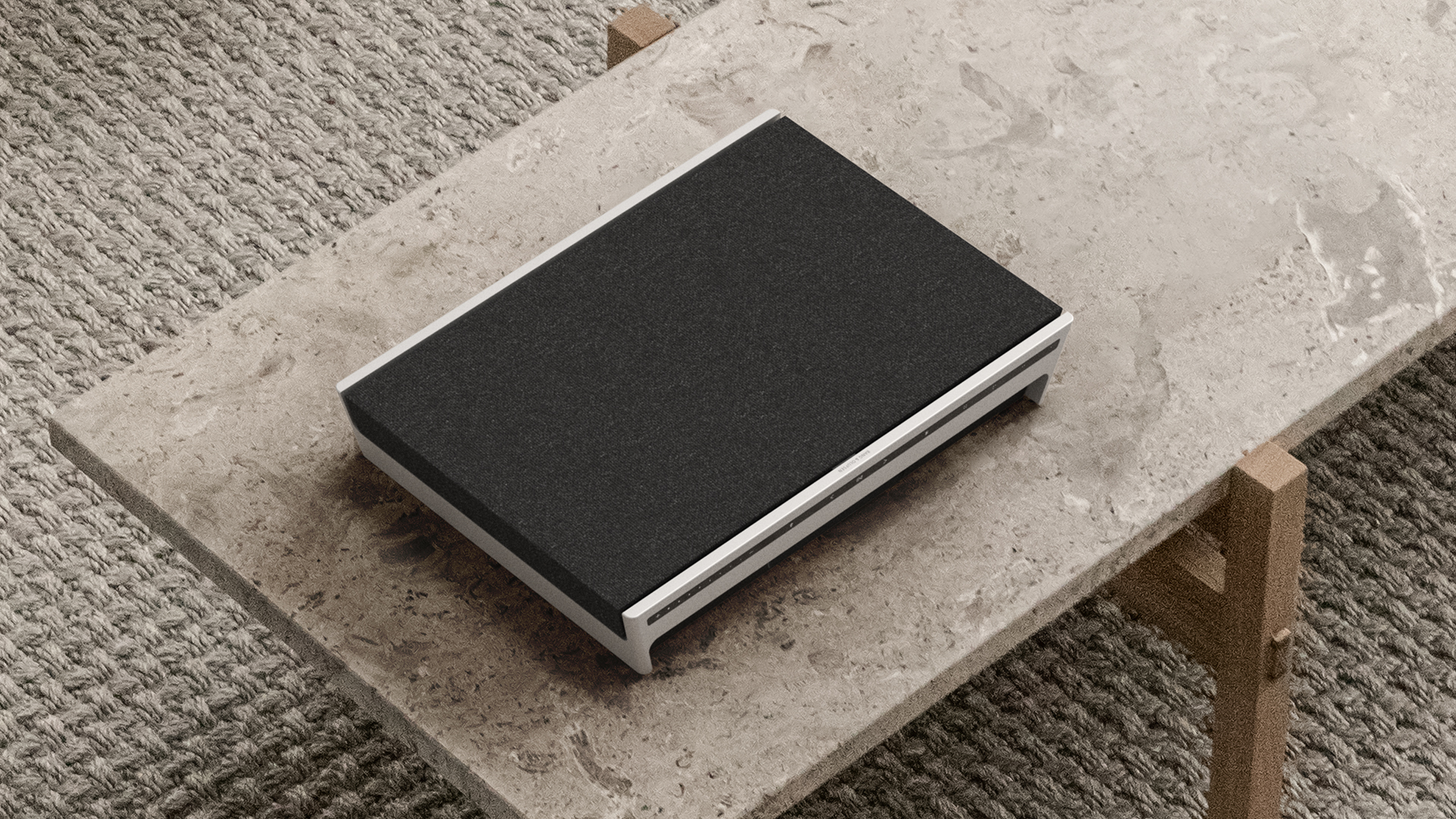Bang & Olufsen Beosound Level review: an elegant wireless speaker that's also portable
The B&O Beosound Level is a refined and stylish speaker that's packed with features and is built to be upgradeable – but it has some oddities too


-
+
Great sound quality for the size
-
+
Packed with features
-
+
Love the look
-
-
Shame that the best sound is when laid flat
-
-
Wall mount is separate purchase
-
-
Handle and buttons too close
Why you can trust T3

Forgive us if this B&O Beosound Level review ends up being as much about explanation as it does critique, but this a surprisingly complicated product considering its basic sell is that it's a mid-size wireless speaker with high-quality sound. It's aimed squarely at B&O's general audience of demanding, tech-savvy music lovers with an eye for design.
The Beosound Level is a relatively thin speaker that can be positioned on a surface upright, or laid flat, or wall mounted. But it's also a portable speaker, thanks to a built-in battery. And it's a smart speaker. And it offers both Wi-Fi and Bluetooth.
That's a lot for one speaker to take on, but happily its audio quality makes it an easy recommendation overall, and gives us a prime spot in our guide to the best multi-room speakers. It's well-balanced, has a light and dynamic touch for detail, and doesn't forget to add some grit for bass and lower mid-range.
It does have a few things about it that are either odd or imperfect as we'll come to, but if you're looking for a stylishly understated speaker that isn't understated on audio quality, it's an excellent choice.
B&O Beosound Level review: Price & release date
Released in early 2021, the Beosound Level costs from £1,099/$1,499/AU$2,150, which is for a model with a dark grey fabric covering and silver aluminium frame. In that design, it looks good… but it's not the right choice.
If you're going to splash out on an elite Wi-Fi speaker, you should be looking at the version that comes with a more gold metal finish, and a wooden grille. That's the one I tested, and I love it – it fits nicely in either a minimalist setup or a more busy room – wood is just flexible that way. You do may a fair chunk more for it, though – this version costs £1,299/$1,799/AU$2,550.
Both models are obviously at the high end of Wi-Fi speakers, but this is aiming to compete with the likes of the Naim Mu-So 2nd Generation, which is similar in price.
Get all the latest news, reviews, deals and buying guides on gorgeous tech, home and active products from the T3 experts

B&O Beosound Level review: Features & design
As mentioned, the Level features multi-room Wi-Fi streaming, including over Apple AirPlay 2, Google Cast and Spotify Connect, so you can mix and match it with other speakers from these systems easily (I mostly used it as part of an AirPlay multi-room system that also includes Sonos and HomePod products, for example). You can also set two Levels up in a stereo configuration.
It includes Google Assistant, so it's a fully formed smart speaker too. There's a physical mic switch on top if you prefer to make sure it's never listening. It's easy to set all this up via the B&O app, and then the Google Home app.
The B&O app also enables you to customise the EQ, which is an option on all of B&O's products. B&O often aims for a fairly neutral presentation, and I often like to add a bit of boosted bass and treble to its products, but you can push it in any direction gently.
As mentioned, Bluetooth is also on board, in case you take advantage of its portability, or if you want to connect a Bluetooth turntable or similar – though note that while it supports Bluetooth 5.0, there's no aptX here.
You can also connect to it via 3.5mm jack or ethernet port. Power can be supplied by plugging in a USB-C cable directly, although it comes with a magnetic puck for easy popping and off when you want to go mobile.
The battery lasts for around 16 hours at normal volume, which seems like plenty – at 3.3kg, this isn't exactly something you'll take hiking.
There's only one annoyance we had when taking it down the garden, which is that the touch controls are on a panel along the top, and the handle is effectively just a metal strip under them. It's extremely easy to accidentally fiddle with controls while trying to just shift it.
The design is interesting for a couple of different reasons – internally and externally. The most obvious way to position it is sitting upright, it looks great like this. It's 34.8x23x5.6cm, so its thinness makes it fairly easy to find a spot for it on a shelf.
But that's not the only option – you can also lay it flat, and the Level actually adjusts to a different audio profile when you do, but we'll cover that in that in next section.
Or you can wall-mount it… sort of. Well, you can definitely wall mount it, but you'll need to spend more money on a specific accessory, which costs £89/$119. When you've already spent this kind of money, that really just feels like unnecessary hassle.
I have to say that being upright feels like how the Level is actually intended to be. You can't lay it flat cleanly while also charging it, for example, so that's clearly not how it's expected to be. It's also doesn't look quite as good, when you can see the little feet and stuff. The wall mount being an add-on makes that mode feel like an add-on too.
The interesting internal design is that it's made to be upgradeable. The wireless module, the sound processing and the battery can all be replaced with upgraded versions down the line – it's intentionally a module design. The grille can also be swapped for new designs in the future.
The idea is to try to give the Level the same kind of longevity that people used to get from hi-fi, before processing that quickly becomes obsolete got involved. B&O can't change that technical progress sometimes makes the processing obsolete still, but it can at least make sure that you don't have to give up the speaker baby with the electronic bathwater.

B&O Beosound Level review: Sound quality
For a thin speaker, the Beosound Level doesn't struggle for depth. There's great representation across the whole range, from treble that has no problem lifting clearly out of the mix, to a warm mid-range with plenty of definition for different elements, to bass that isn't exactly massive and pounding, but has no problems making itself known and filling out what it needs to with a good level of impact.
I mentioned that B&O often aims fairly neutral with its products, but there's definitely a bit of energy here that adds the bounce you want for really effective pop or electronic listening – though it's certainly not a strong colouration, and it really shines with more classic fare too. Its focus on detail and poise means that something like piano is satisfying resonant, and an orchestral pieces can really fill out the room.
Now, it's not as good as the Naim Mu-so 2nd Gen I mentioned earlier. That's much bigger, and speaker companies can simply do more with more volume. If you're just looking for audio quality, that remains the top pick – though it's also less flexible than the Level overall, it should also be noted.
The issues with the sound of the Level are pretty much all to do with its design – that there's only so much dynamic range that can be squeezed from this shape. It means that compared to something larger, the music sounds just a little constrained, and can't totally let loose like it wants to.
When you lay the Level flat, it switches to a "360-degree" mode automatically, shifting its sound processing, and I have to say that I actually prefer this, because it adds extra expansiveness to the sound that partly overcomes the constrained feeling I mentioned before.
When you switch from one position to the other, the music dims for a moment, then comes back in its differently processed form, and once you put the Level flat, you can practically hear that the music has let its hair down and has a drink in each hand when it comes back.
So while it sounds great in either mode, I just wish the upright mode had that extra bit of openness.

B&O Beosound Level review: Verdict
I've really enjoyed having the Beosound Level around. In my office, it's been the perfect addition, taking up only a sliver of space on a shelf, but providing a bigger, richer and more enjoyable sound than your average smart speaker. And it looks better while doing it.
Of course, it's a premium price to get there, but I don't think its price is out of line at all. Especially when it comes with so many extra features, and great cross platform streaming support.
It has these little foibles that I've mentioned, and I can certainly imagine a 2nd-gen version that hits full marks with just a few tweaks. But I think the product we have here is still an excellent buy, by delivering massively enjoyable sound, and just being damn cool.
B&O Beosound Level review: Also consider
I already mentioned that the Naim Mu-so 2nd Generation is the lead when it comes to sound quality. You can tell partly from the streaming support – you've still AirPlay, Google Cast and Spotify, but native Tidal, Roon and Qobuz support is also there. Here's our full Naim Mu-so 2nd Generation review for exactly why we rate it so highly.
If you need something smaller, the Naim Mu-so Qb 2nd Generation is… well, it's a smaller version of the above. And it sounds fantastic too, and costs significantly cheaper than the Beosound Level.
If you want a Wi-Fi smart speaker with AirPlay and Goole Cast, and powerful audio, for a more mid-range price, the Audio Pro C10 Mk II is an excellent choice for a fraction of the price.

Matt is T3's former AV and Smart Home Editor (UK), master of all things audiovisual, overseeing our TV, speakers and headphones coverage. He also covered smart home products and large appliances, as well as our toys and games articles. He's can explain both what Dolby Vision IQ is and why the Lego you're building doesn't fit together the way the instructions say, so is truly invaluable. Matt has worked for tech publications for over 10 years, in print and online, including running T3's print magazine and launching its most recent redesign. He's also contributed to a huge number of tech and gaming titles over the years. Say hello if you see him roaming the halls at CES, IFA or Toy Fair. Matt now works for our sister title TechRadar.